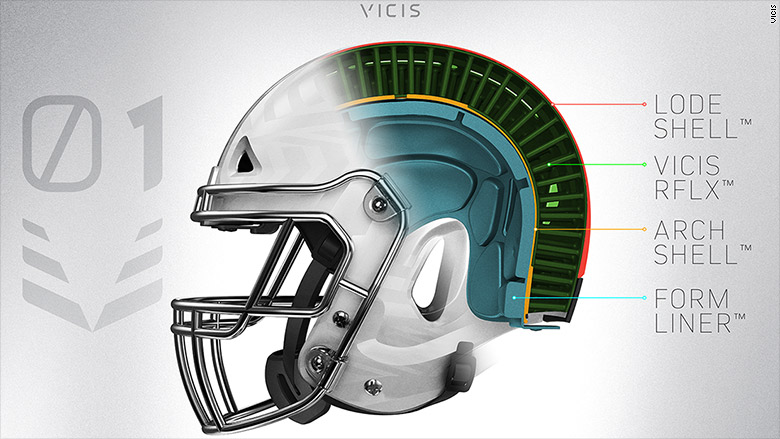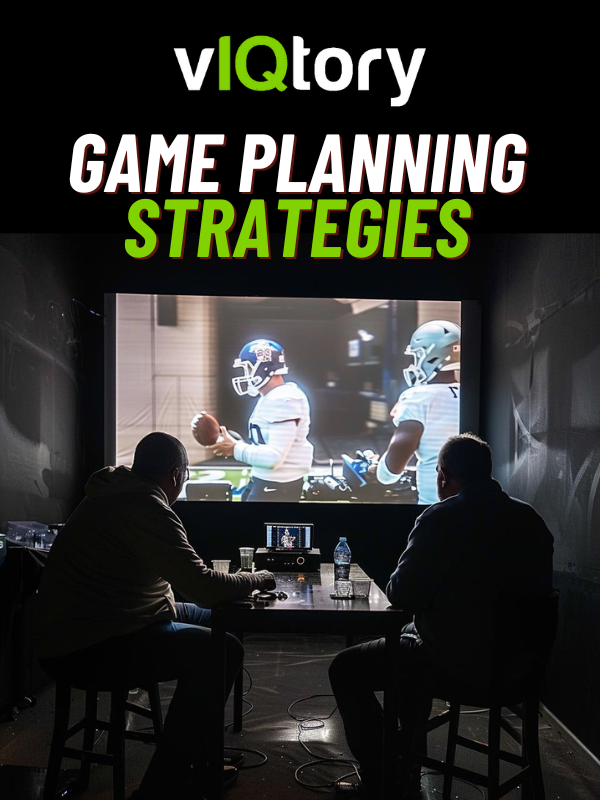Football facemasks used to be a single bar that protected the face. Today, we see all various types of facemasks. Which football are facemasks legal?
Facemasks that are legal must provide a clear view to the eyes. The referee will remove facemasks if they cover the player’s eyes.
This article will show you the different types of facemasks through the years and ones that are both illegal and legal.
Legal Facemasks In Football
It’s hard to imagine playing football without a facemask or even a helmet, but that is exactly how football used to be played.
Football initially started as rugby (rugby is one of football’s long-lost ancestors). Players were in tight formations, trying to overpower one another. The giant scrum of players had plenty of kicking, elbowing, and stomping.
Players often got caught in the middle of the scrum and broke fingers, legs, and arms – similar to what we see in today’s game.
However, the head was never protected. The low velocity of the players in the scrum didn’t necessarily include high-impact hits. We also didn’t have the science and the technology that players and teams have today to ensure that player safety is a number one priority.
Let’s look at a timeline of the facemask, starting with the invention of the helmet:
Football Facemasks Through The Years
1893: To be fair, the exact date and to whom the credit is deserved is unclear. However, in the 1893 Army-Navy game, Admiral Joseph Mason Reeve wore one. The old story is that he had been kicked and hit in the head so many times his doctor told him that another hard impact could lead to “instant insanity.” Reeve went to his shoemaker and had him fashion a thick hat with flaps to cover his ears. Thus, the helmet was born.
1943: The helmet is officially made a requirement for all players to wear by the NFL. Players are still wearing hard leather helmets at this time
1953: The Cleveland Browns quarterback Otto Graham is knocked out of a game following an elbow to the face. The team’s trainer attached a single bar to Graham’s helmet that ran across his face to protect him. After the game, a more formal design was created, and all Cleveland players were required to wear a single-bar facemasks. Almost immediately, other NFL teams follow suit.
1955: The NFL makes the single bar facemask a requirement for all players to wear. It is most noteworthy that most players were voluntarily wearing them anyway.
1960s: Different phases of improving the facemask started in this decade. The bar is moved to the bottom of the helmet, and it now has 2 bars to cover more of the face.
From The Double Bar To The Full Bar Facemask
The late 1960s-1970s: Facemasks continue to add more bars and cover more and more of the face due to their proven ability to protect them. Pictured below is what is called the “full” facemask on Hall of Famer David Robinson:

The 1980s-1990s: There are no real changes to the facemask. We will see various styles with changes in where the bars are on the helmet. Look at Hall of Fame running back Thurman Thomas below:
2000: We begin to see what we see on fields across the country today. Most players are wearing variations of what is depicted below, with some linemen sporting a vertical bar.
2004: The NFL formally bans single-bar helmets, but some players were grandfathered in. This exception is only for kickers who prefer visibility over safety. Ultimately, the last single bar helmet appeared on the professional field in 2007.
Learn How To Watch Film Properly…
Uncover your opponent’s offensive and defensive tendencies so you can easily build a game plan.
Inside You’ll Find:
- Strategies to pick apart defenses
- How to identify player weaknesses
- How to save time in your weekly breakdowns
Facemask & Helmet Innovations
Football helmets continue to evolve each year. As technology improves, so does the style of helmets.
Riddell introduced their new Speedflex helmets, which have a soft padding sweet spot on the top of their helmets.
This is to help reduce concussions from that point of contact. Their insides are also more padded and comfortable for the player.
The Schutt F7 VTD helmet also provides a natural comfort fit with the new Tectonic Plate 3DM system. The tectonic plate system is the rectangle outer core technology that supports head collisions.
This helmet shell is shown without the facemask.
Another popular helmet on the market is the Vicis Zero1.

Traditional helmets use a hard shell and a protective bladder to help secure the skull. The Vicis Zero1, however, uses a shell, their patented technology, another shell, and a form liner.
Although this hasn’t been proven to reduce concussions completely, it’s certainly paving the path for helmets to be more secure.
Brands like Riddell, Schutt, and Vicis continue to innovate their products to make sure football is as safe as it possibly can be. They update their performance yearly and create new products for youth and high school players to wear.
Football Gear & Other Facemask Rules
The NCAA and NFHS have also ruled against having dark-tinted visors as well. The reasoning was for the risk of a player being unconscious; the training staff needed to look inside the facemask.
However, lighter or smoke color visors are still legal. Although, it’s at the referee’s discretion if the player can wear it or not.
In 2016, the NCAA also ruled against having multi-bar facemasks. This was for fear of getting fingers caught in them, as well as training staff support.
When we say “multi-bar,” we’re not referencing the facemask players commonly wear today; rather, we reference the image above where the mouth of the facemask looks wired rather than straight bars.
What Are Football Facemasks Made Of?
Football facemasks are made of hard plastic molded to the front of the helmet.
Do Different Football Positions Have Different Facemasks?
Typically quarterbacks and skill players have fewer bars on their facemasks for visibility purposes. Offensive and defensive linemen will have more bars on their facemasks to protect them from accidental fingers and hands.
Keep Learning
Football helmets continue to innovate to keep football safer than it’s ever been. Football gear in general has improved as technology continues to improve.
If you want to improve your football IQ even more, we recommend checking out our Ultimate Football Guide. This course has everything you need to know about football! Click below to get started.
Increase Your Football IQ
Why spend hours on Google and YouTube trying to learn football yourself? We’ve created a simple guide to help make you the smartest person in the room.





